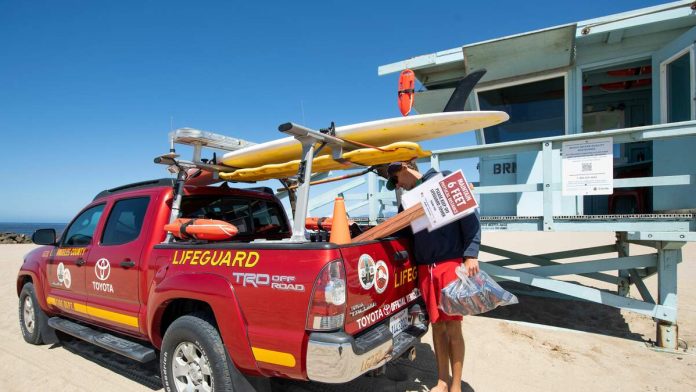Los Angeles County lifeguards are taking mental health leave due to the distress caused by a toxic algae bloom affecting marine life from San Diego to Santa Barbara. Spencer Parker, a lifeguard with over 20 years of experience, reported an unprecedented number of dolphin strandings in recent weeks. The algae bloom, producing a neurotoxin called domoic acid, is poisoning marine animals, leading to numerous strandings and deaths.
The worst effects are seen in Los Angeles and Ventura counties, where experts suspect that runoff from January’s firestorms may have exacerbated the bloom. According to the National Oceanic and Atmospheric Administration, the bloom began affecting the Malibu coast in February. Since then, the impact on marine life, including sea lions and dolphins, has been severe, with no immediate end in sight.
John Warner, CEO of the Marine Mammal Care Center, described the situation as the worst they’ve encountered. The center has taken in 385 animals sickened by the neurotoxin, exceeding its annual capacity. Lifeguards, often the first to spot affected animals, are emotionally overwhelmed by the frequent strandings.
Tracy Quinn, CEO of Heal the Bay, emphasized the abnormal intensity of the bloom. Marine biologist Dave Baber noted that this year’s bloom, lasting over ten weeks, is the longest and most severe in recent memory. The bloom is suspected to be intensified by a secondary toxin, saxatoxin, causing paralytic shellfish poisoning.
Beachgoers are urged to report sick marine life to authorities rather than attempting rescues themselves. While swimming in the ocean remains safe, consuming contaminated seafood poses health risks. The Marine Mammal Care Center continues to respond to the crisis, but the situation remains dire.

Recent Comments